How Much Does A “Bad” Facing Really Affect Your Property Value?
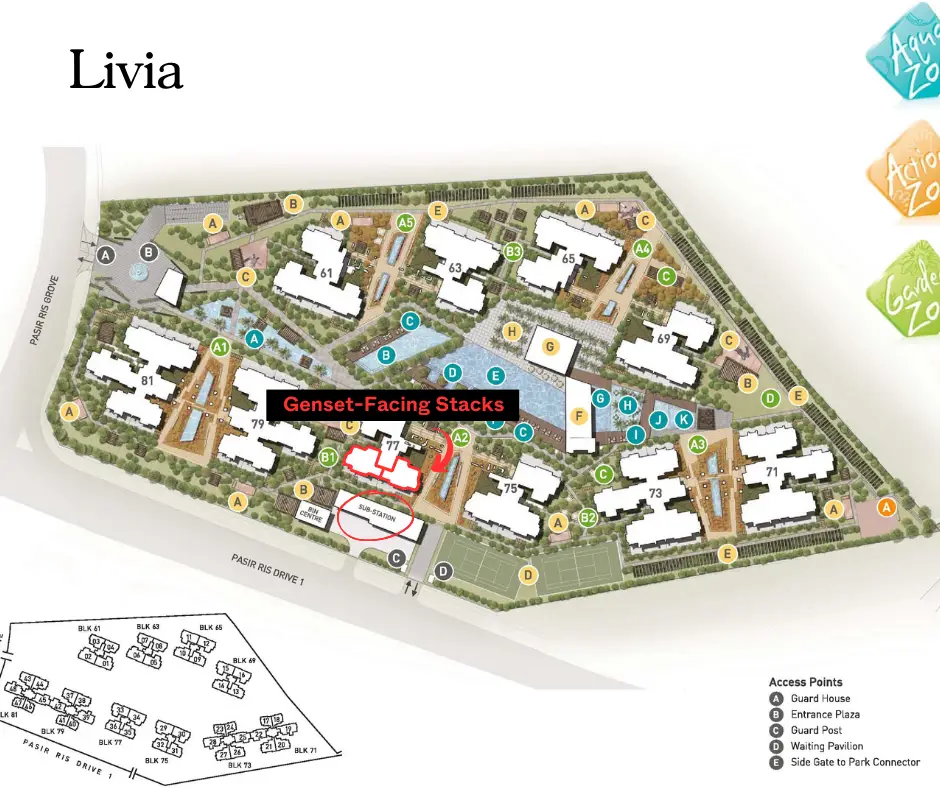
Get The Property Insights Serious Buyers Read First: Join 50,000+ readers who rely on our weekly breakdowns of Singapore’s property market.
A seasoned content strategist with over 17 years in the real estate and financial journalism sectors, Ryan has built a reputation for transforming complex industry jargon into accessible knowledge. With a track record of writing and editing for leading financial platforms and publications, Ryan's expertise has been recognised across various media outlets. His role as a former content editor for 99.co and a co-host for CNA 938's Open House programme underscores his commitment to providing valuable insights into the property market.
When it comes to property investments, certain preconceived notions often dictate our decisions, even before we delve deep into the details. One such popular belief revolves around properties facing undesirable landmarks, like the power station, or the internal substation, and their potential impact on investment returns. Tell an investor that a property with such a view fetches lower gains, and they’ll likely nod in agreement. Such assumptions, rooted deeply in our collective psyche, often go unchallenged.
However, how often do we actually pause to dissect these beliefs? Is the potential negative impact of a poor facing genuinely significant, or could the discounted initial price tag compensate for any future drawbacks? To answer this, we examined several units, aiming to quantify the real implications of this widely accepted notion.
Stacks with less-than-ideal views
We picked out some specific condo stacks with units facing the power station. These condos were chosen based on their size so as to have a larger number of transactions to analyse. They’re also more recent developments as they tend to have been transacted in more recent times and also have more detailed site plans that indicate clearly where the generator sets are.
Here are the ones we used:
| Condos | Genset-facing Stacks |
| The Palette | 1, 2, 7, 8 |
| Livia | 35, 36 |
| Parc Rosewood | 128, 129 |
| The Skywoods | 2, 3 |
| Riversound Residence | 15, 16 |
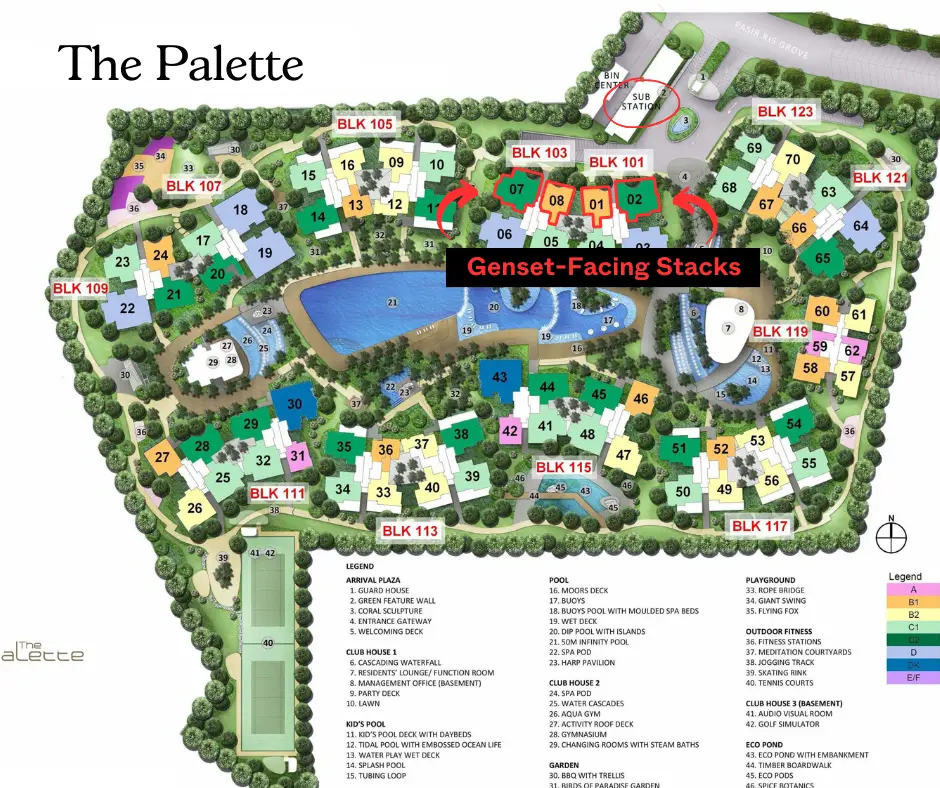
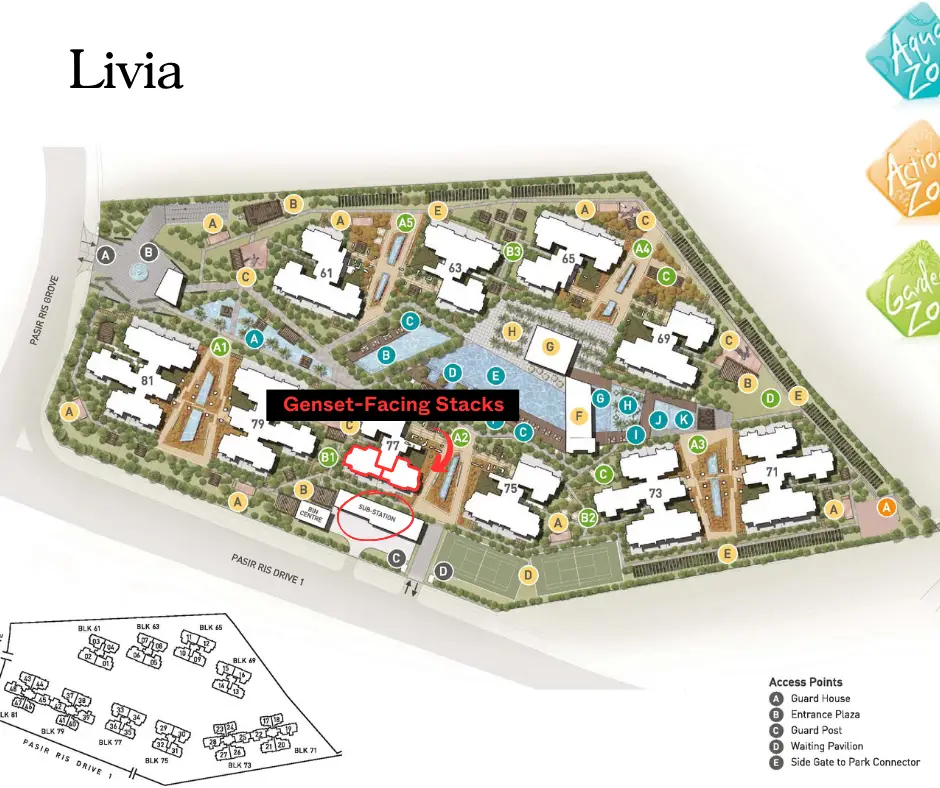
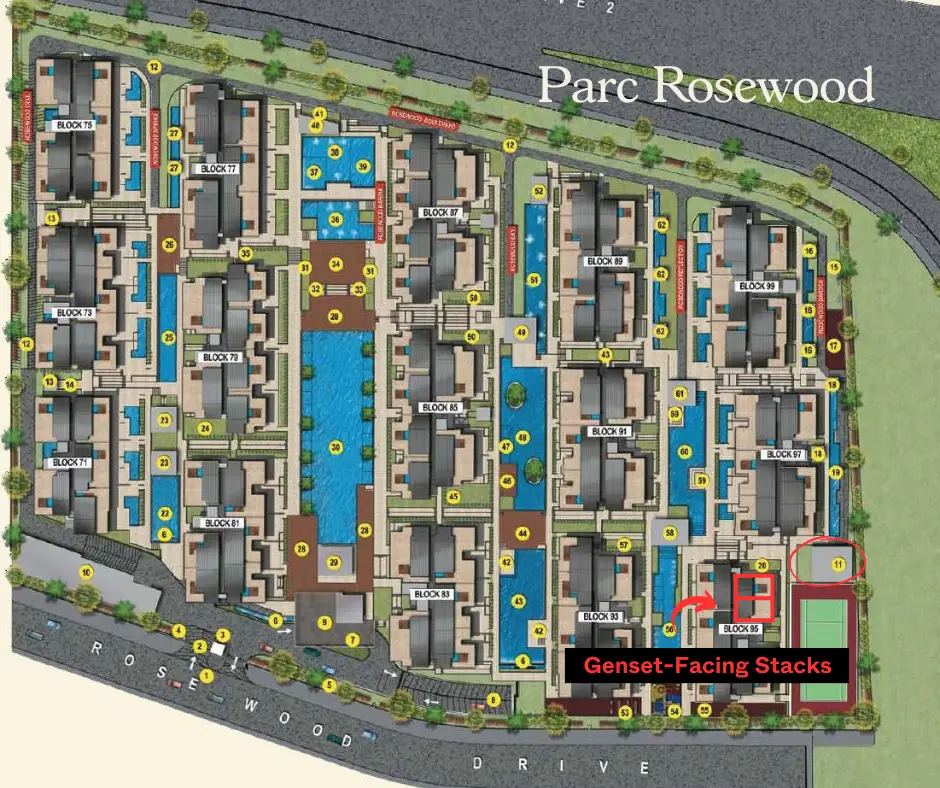
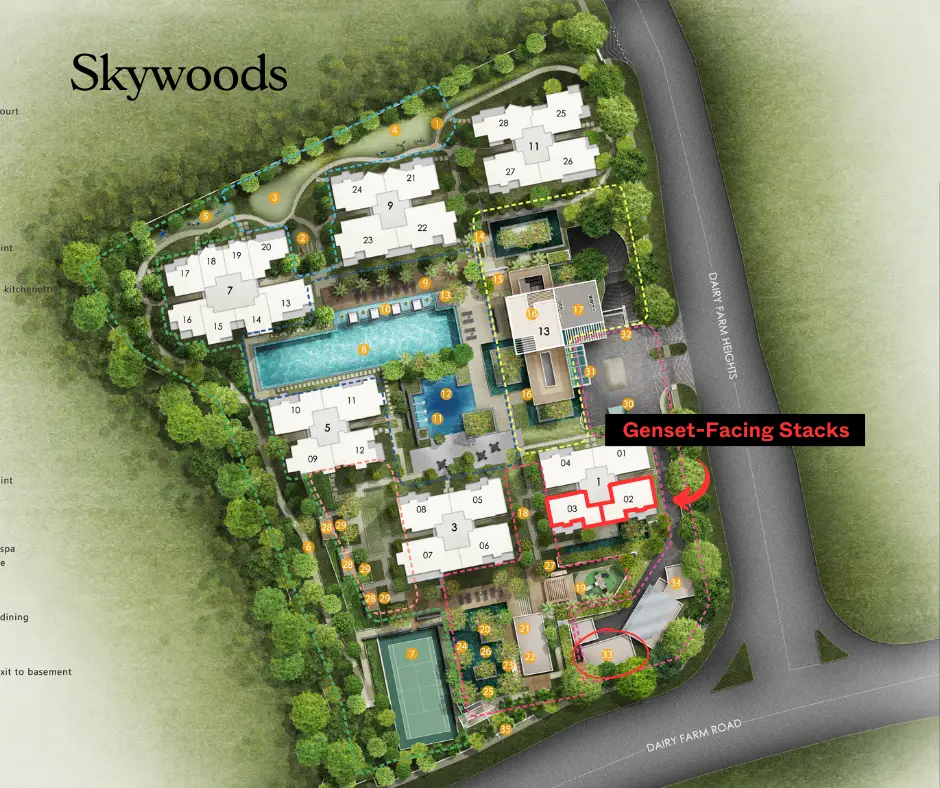
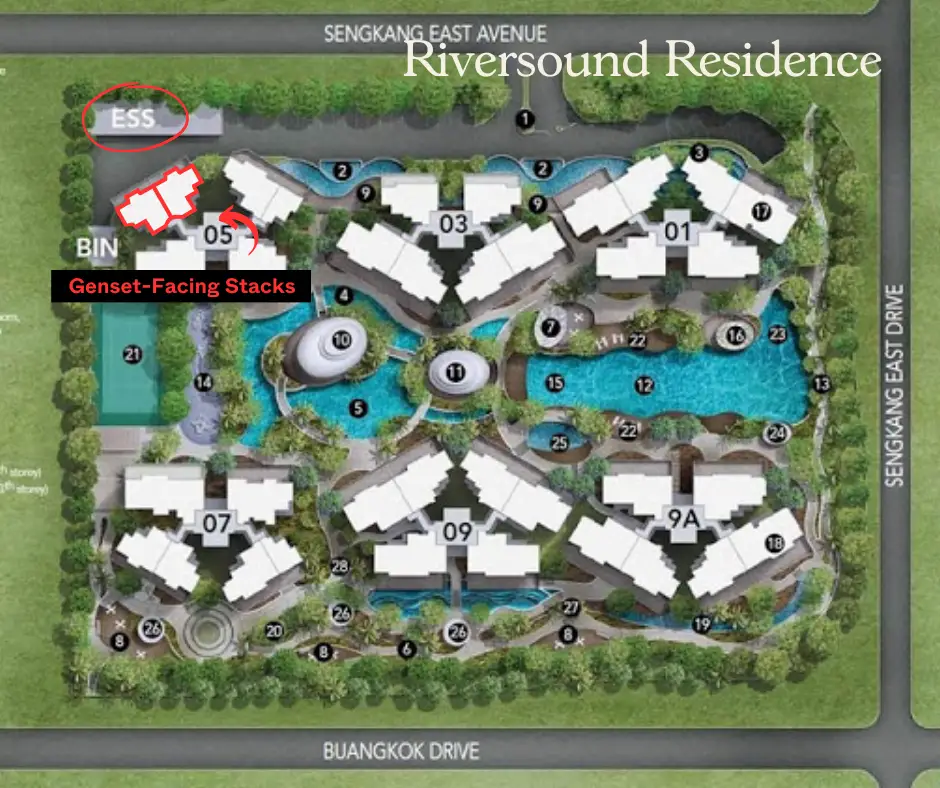
What are the differences in gains?
| Face Genset? | Min % Gains | Avg % Gains | Max % Gains |
| No | -16.9% | 19.2% | 91.0% |
| Yes | -3.3% | 19.7% | 40.4% |
If we look at the average gains, the difference appears to be negligible. In fact, the units that don’t face the power station, communal dump, etc. even seem to have a slightly lower average, by half a percentage point.
That said, the units with better facing seem to have a higher potential ceiling for gains, as well as the potential to have lower gains. There isn’t a clear reason for this; but if we had to speculate, we’d guess it’s because stacks with better facings (i.e., not facing the generator station) are likely to be premium stacks that are priced higher. This could result in the potential for both greater gains and greater losses; but this is a speculation we’ll check out below.
Looking at the difference based on lower versus higher floors
In theory, higher floors should mitigate the impact of less desirable facings – be it facing the power station, or communal dump, or just the dingiest part of an old condo. Here’s what the numbers showed:
| Face Genset? | Low Floor | Not Low Floor |
| No | 19% | 19% |
| Yes | 21% | 19% |
Again, the difference is negligible. Being on a higher floor doesn’t seem to improve results; and in fact, units on the lower floors even seem to perform slightly better. But even this difference may not be on account of the facing.
More from Stacked
Should You Buy 8@BT? A Pricing Review Comparison With The Reserve Residences And The Linq @ Beauty World
The official prices for 8@BT aren’t out yet, but the developers have indicated a starting $PSF of $2,530. With that,…
It could just be that lower floor units were purchased for less, to begin with; but we seem to be using this justification a lot. So we decided to check that as well:
That means comparing between new sale and resale units
| Face Genset? | % Gains | Vol. | % Gains | Vol. |
| No | 20% | 420 | 21% | 448 |
| Yes | 23% | 11 | 19% | 21 |
In theory, developers would charge less for stacks or units with worse views (which would include facing the power station, among other things). If units are priced lower, there should be more room for gains.
From what we can see above though, that doesn’t appear to be true. The difference in gains is almost negligible, although we do need to acknowledge the much lower volume of units with poor facing.
As for comparing resale-to-resale numbers, the volume of transactions is too low to draw any clear conclusions.
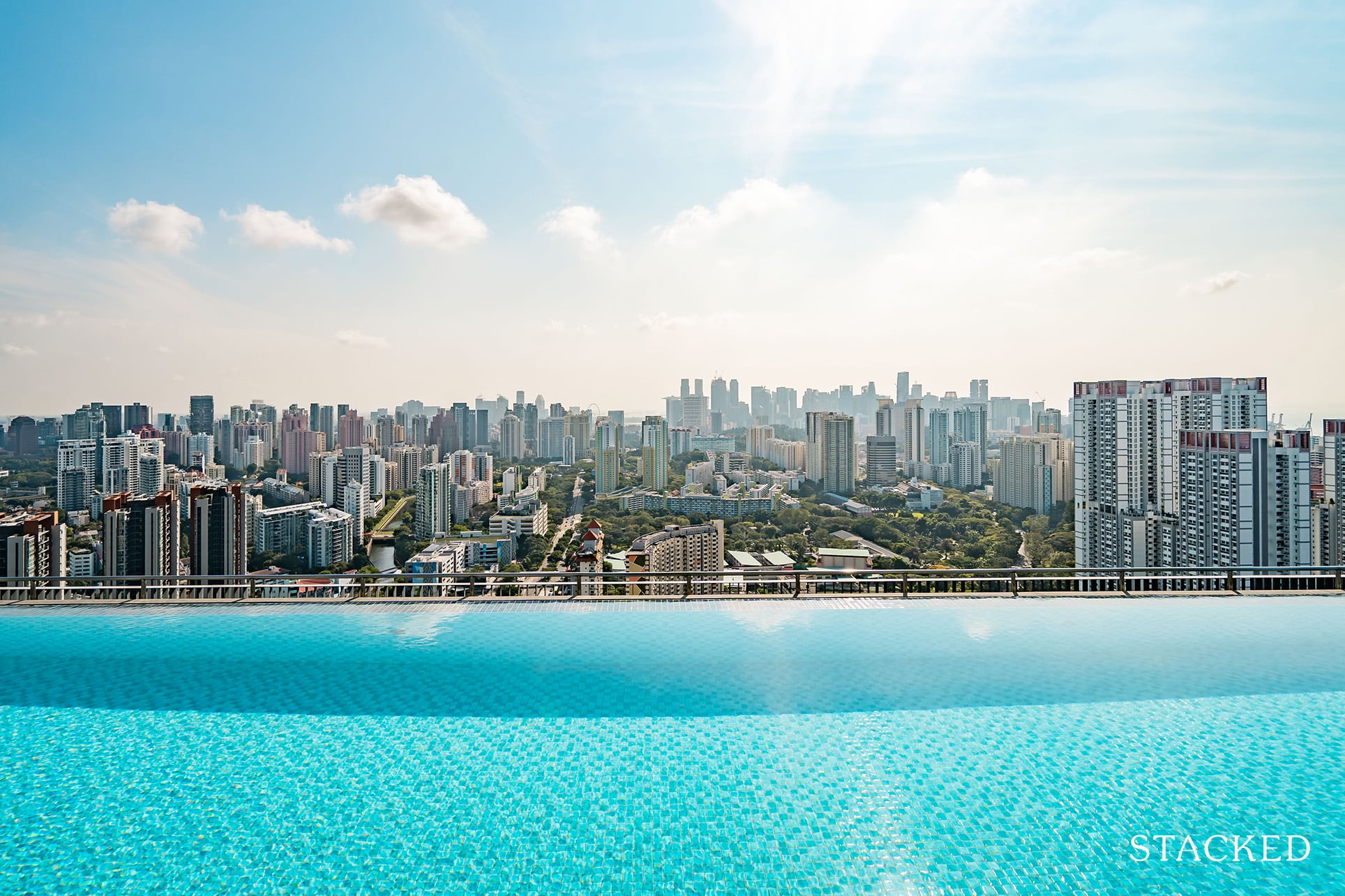
Property Investment InsightsAre Good Views Worth The Premium? Here’s A Short Study On 6 Different Condos
by Ryan J. OngDoes this mean we learned nothing? Not quite.
It shows we take for granted something that can’t easily be proven. Almost everyone agrees that a worst facing or view is bad for property value, but we saw nothing in the gains that reflect that.
This might mean that buyers are not as fussy as we imagine; and that the stigma we attach to certain facings (e.g., directly facing the power station) is undeserved. It might also mean that – thanks to improvements in site layout – developers are skilled enough to ensure that even a “bad” facing is not entirely intolerable.
(Some newer developments even located dumping areas or power stations underground, where they’re not visible from any stack).
Realtors we spoke to said they weren’t too surprised. Most agreed that too many other factors outweigh the issue of the unit’s view/facing. Most realtors, for instance, said that fundamental issues such as proximity to the MRT station and schools, or the overall quantum and size, do take priority over more trivial preferences like the view.
This is especially true of investment-driven buyers, such as landlords (tenants tend to be pragmatic, and seldom agree to pay more because the view is better), or those who are buying because they believe in en-bloc potential.
This doesn’t change the fact that, for some individuals, the view or facing does make a difference. You will run into these buyers from time to time; and of course, it’s always ideal to not be pointed at the worst parts of a condo. But that aside, the numbers suggest we shouldn’t be too hung up on the view.
If the unit is reasonably priced, and the location is practical, then it may be foolish to turn it down just because you can see part of the power station.
For more in-depth looks at new and resale properties, or happenings in the Singapore property market, follow us on Stacked.
If you’d like to get in touch for a more in-depth consultation, you can do so here
Ryan J. Ong
A seasoned content strategist with over 17 years in the real estate and financial journalism sectors, Ryan has built a reputation for transforming complex industry jargon into accessible knowledge. With a track record of writing and editing for leading financial platforms and publications, Ryan's expertise has been recognised across various media outlets. His role as a former content editor for 99.co and a co-host for CNA 938's Open House programme underscores his commitment to providing valuable insights into the property market.Read next from Property Investment Insights

Property Investment Insights This 21-Year-Old Condo Didn’t Sell Out Initially, Yet Became A Top Performer

Property Investment Insights How A Once “Ulu” Condo Launched In 1997 Became A Top Performer

Property Investment Insights This 698-Unit Ang Mo Kio Condo Launched At The Wrong Time — And Still Outperformed Peers

Property Investment Insights These Resale Condos In Singapore Were The Top Performers In 2025 — And Not All Were Obvious Winners
Latest Posts

Property Market Commentary How The HDB Resale Market Performed In 2025, And What It Means For 2026 Prices

Property Market Commentary 4 Key Trends Reshaping Singapore’s New Launch Condo Market In 2026

Homeowner Stories What I Only Learned After My First Year Of Homeownership In Singapore

Singapore Property News Why More Land Doesn’t Automatically Fix Housing In Singapore

On The Market Here Are The Cheapest 4-Room HDB Flats in Central Singapore You Can Still Buy From $490K

Editor's Pick Should We Buy An Old 99-Year Leasehold Condo To Live In: Will It’s Value Fall When The Lease Runs Out?

Editor's Pick I Reviewed A New Launch 4-Bedroom Penthouse At Beauty World

Property Market Commentary When Renting In Singapore Is The Smarter Move — And Buying Can Wait

Editor's Pick Why Singaporean Families Are Looking At This Landed Enclave From Around $4M

Singapore Property News Lentor’s First Condo Is Complete — The Early Profits May Surprise You

Editor's Pick A Wave Of New HDB Resale Supply Is Coming In 2026: Here’s Where To Find Them

Property Advice We Own A $800K 1-Bedder And A $1.1M 3-Bedder: Is It Possible To Upgrade To A 4-Bedder Condo?

On The Market These Are Some Of The Cheapest 5-Room HDB Flats Left In Central Singapore

Singapore Property News $281.2M in Singapore Shophouse Deals in 2H2025 — But That Number Doesn’t Tell the Full Story

Property Market Commentary 5 Key Features Buyers Should Expect in 2026 New Launch Condos


